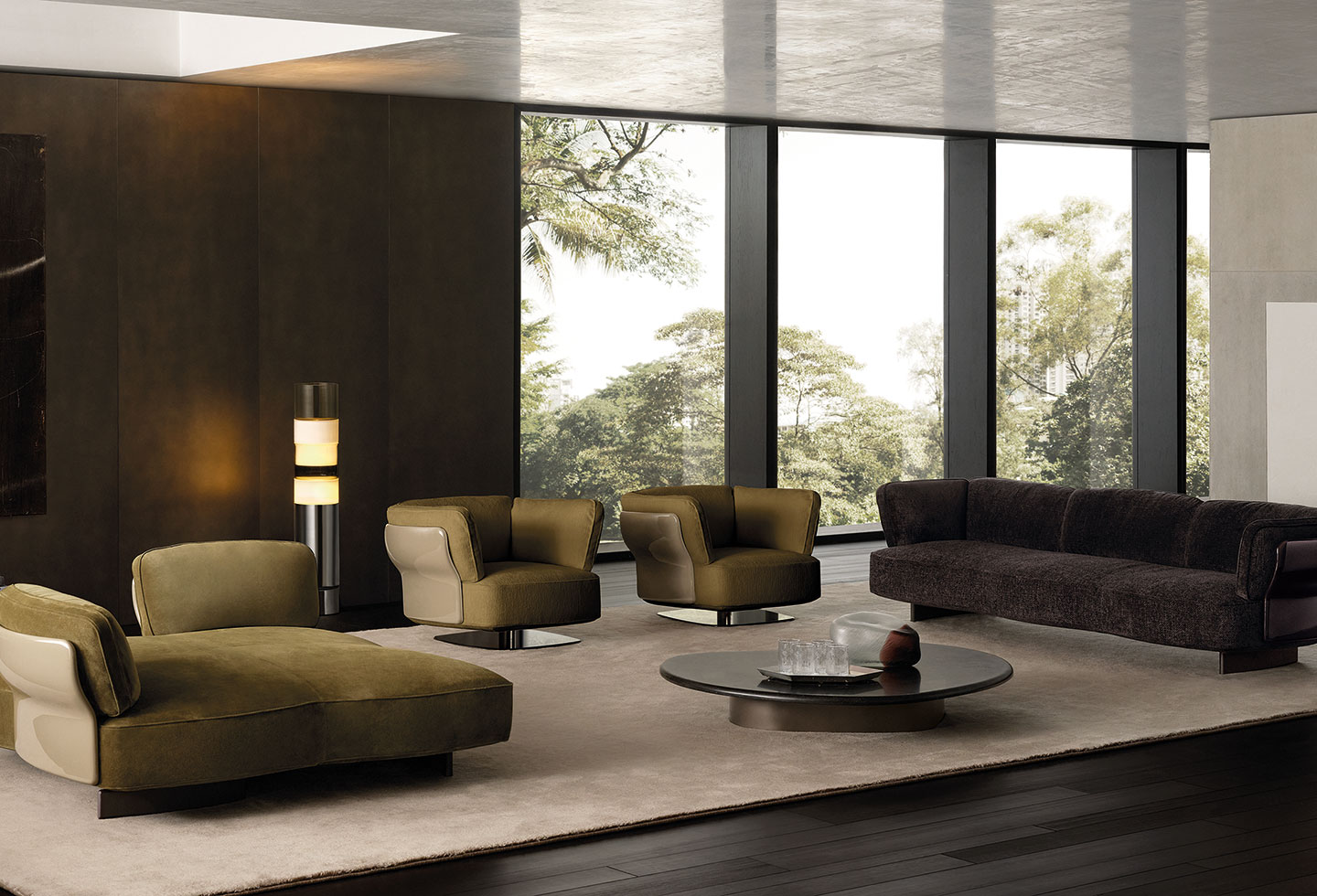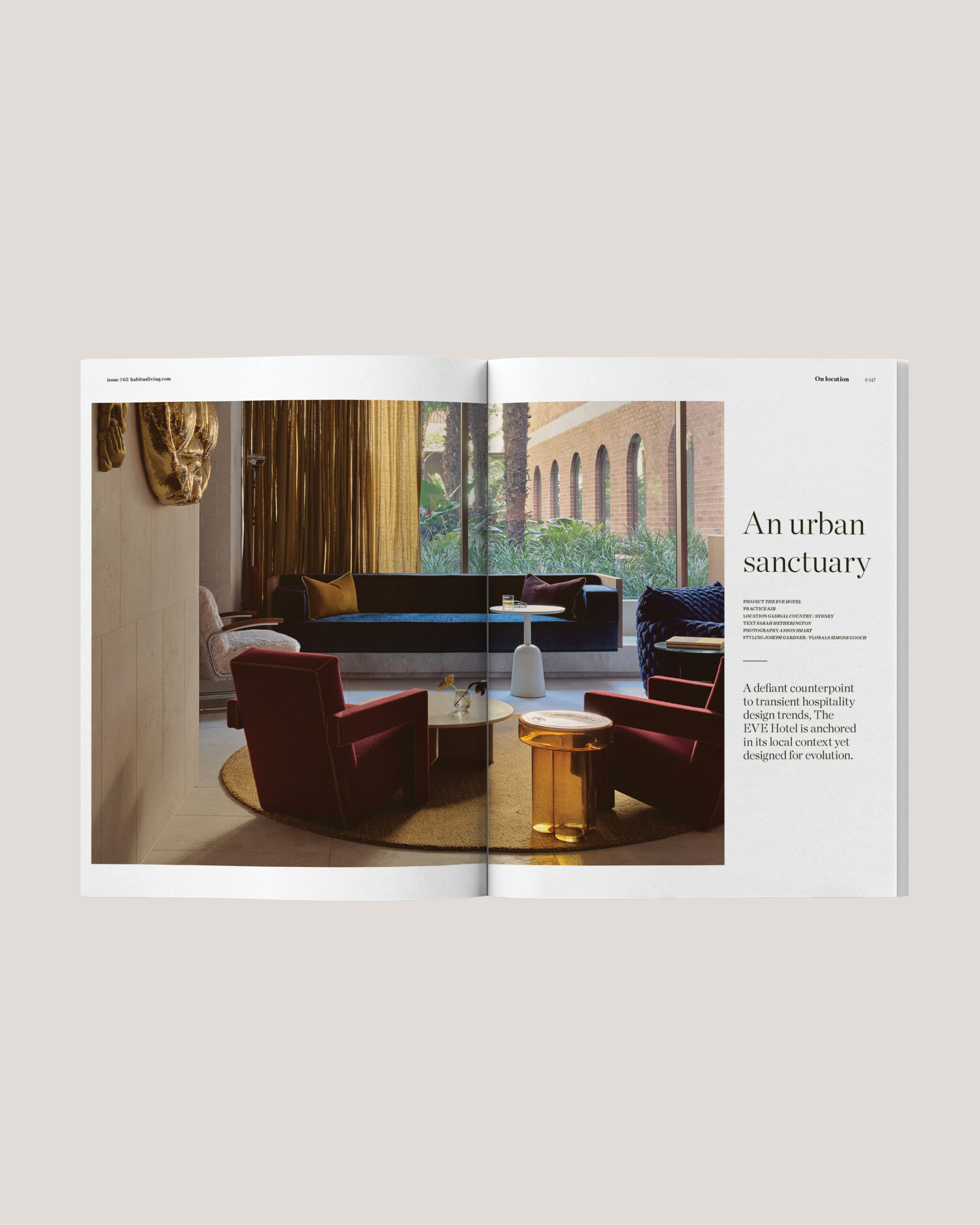Founded in Tokyo in 2002, Nendo has built a global reputation on the strength of its restraint. Under the direction of Oki Sato, the studio works across architecture, product and installation, often reducing form to a single gesture. For their umpteenth collaboration, Sato joins long-time partner Minotti to develop Saki – a modular seating collection demarcated by curvature and contrast.
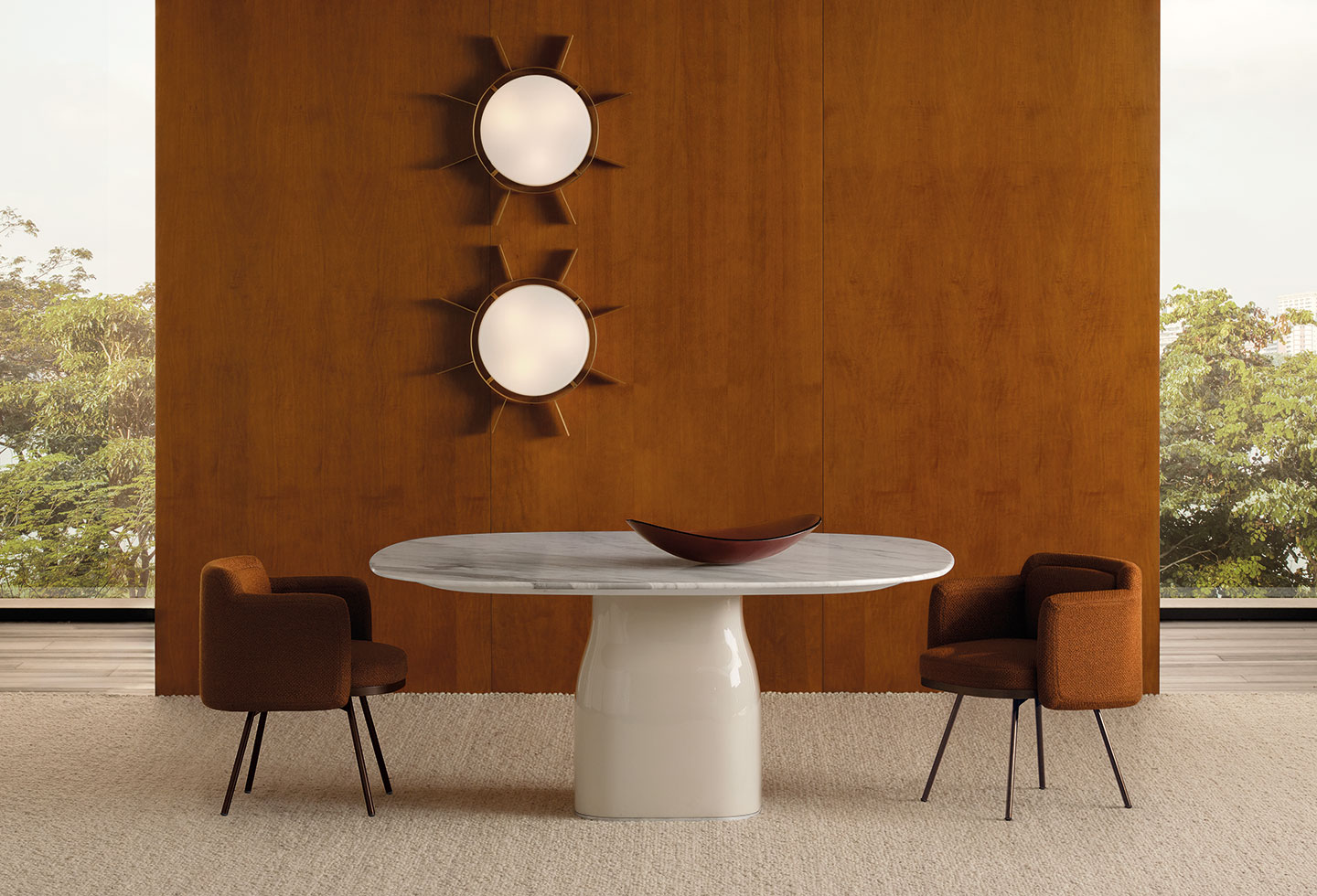
[Saskia Neacsu] There’s often a tension between minimalism and personality in your pieces. How do you keep one from overpowering the other?
[Oki Sato] I begin by creating a form that feels instantly friendly, then introduce a subtle twist. My goal is to design something that sparks both a question mark – “What is this?” – and an exclamation mark – “Ah, I get it!” – at the same moment. That overlap of discovery and dialogue keeps either side from getting too loud.
Nendo’s practice spans architecture, objects and installation. Do these different scales of work modify the way you approach furniture?
Whether it’s a small piece of chocolate or a large-scale architectural space, my design process doesn’t change. Of course, there are technical differences, but in both cases, the design is experienced by living human beings, and the goal of eliciting an emotional response remains the same.
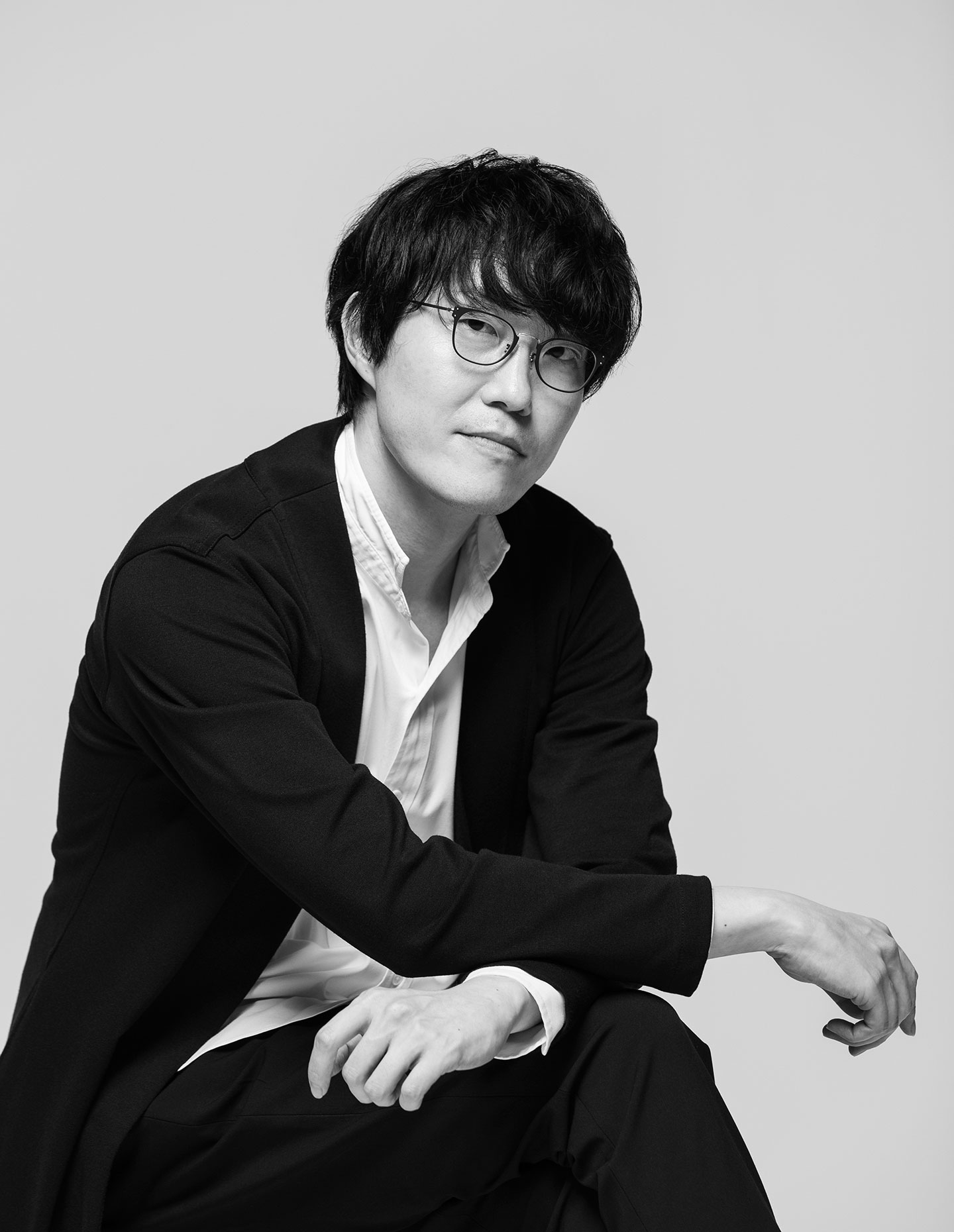
What do you look for when you begin a conversation with artisans?
When I engage in dialogue with artisans, I place great importance on visiting their workshops while they are actually working. I pay particular attention to the tools they use. Sometimes, these tools are custom-made or uniquely modified by the artisans themselves, and I feel that observing them offers insight into their personal dedication and individuality.
Nendo was founded on the idea of “flexibility and reinvention.” How does that philosophy translate into your collaboration with a brand as established as Minotti?
By approaching projects and design from various fields with flexibility, I find that experiences across disciplines influence one another and lead to new ideas. While respecting the brand’s history and values, I reinterpret materials, functions, and context to create designs that feel both unexpected and unmistakably Minotti.
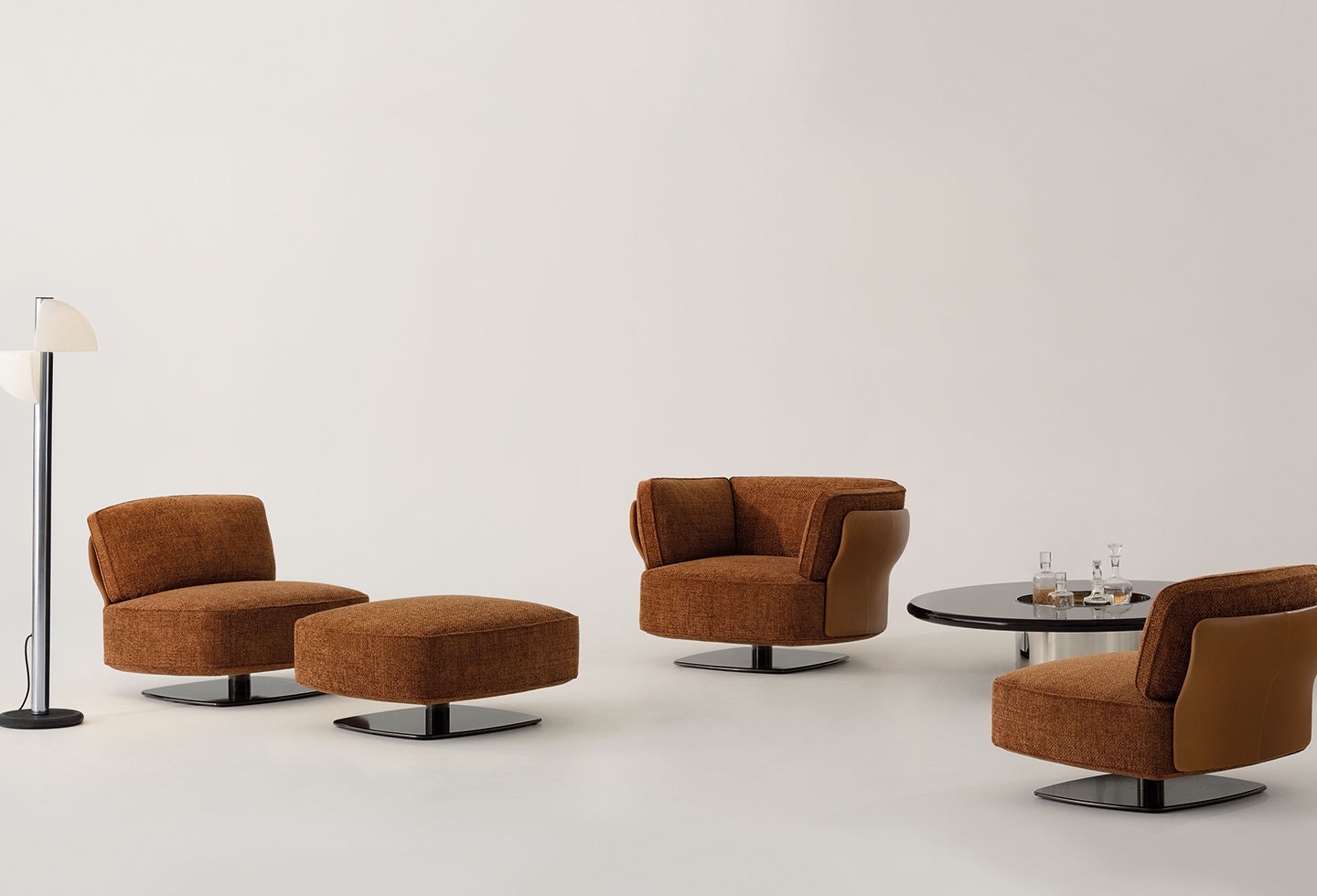
The Saki collection you designed for Minotti explores “curves, tactility and softness.” What were you hoping to evoke through these forms? Was there a particular detail you hoped would draw people in or catch them off-guard?
The Saki collection project began with the development of an indoor version of Amii, and through repeated dialogue, the concept evolved into Saki. The contrast between the soft cushions on the inside and the hard resin panels on the outside is distinctive, while the upper part of the panel has a soft curved surface that echoes the cushions, resulting in a harmonious finish. This expression is characteristic of Saki, as if it captured the moment when a bud blooms.
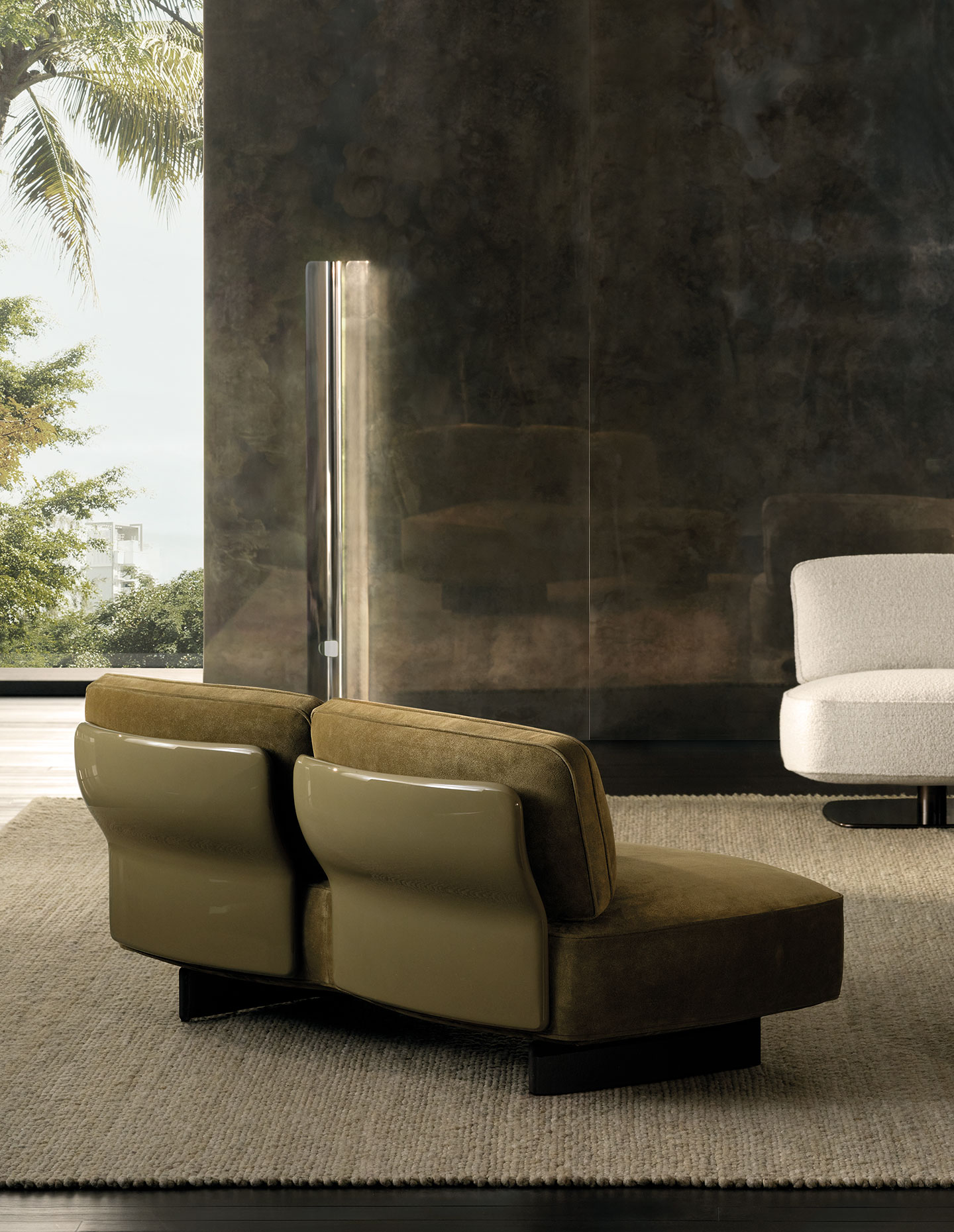
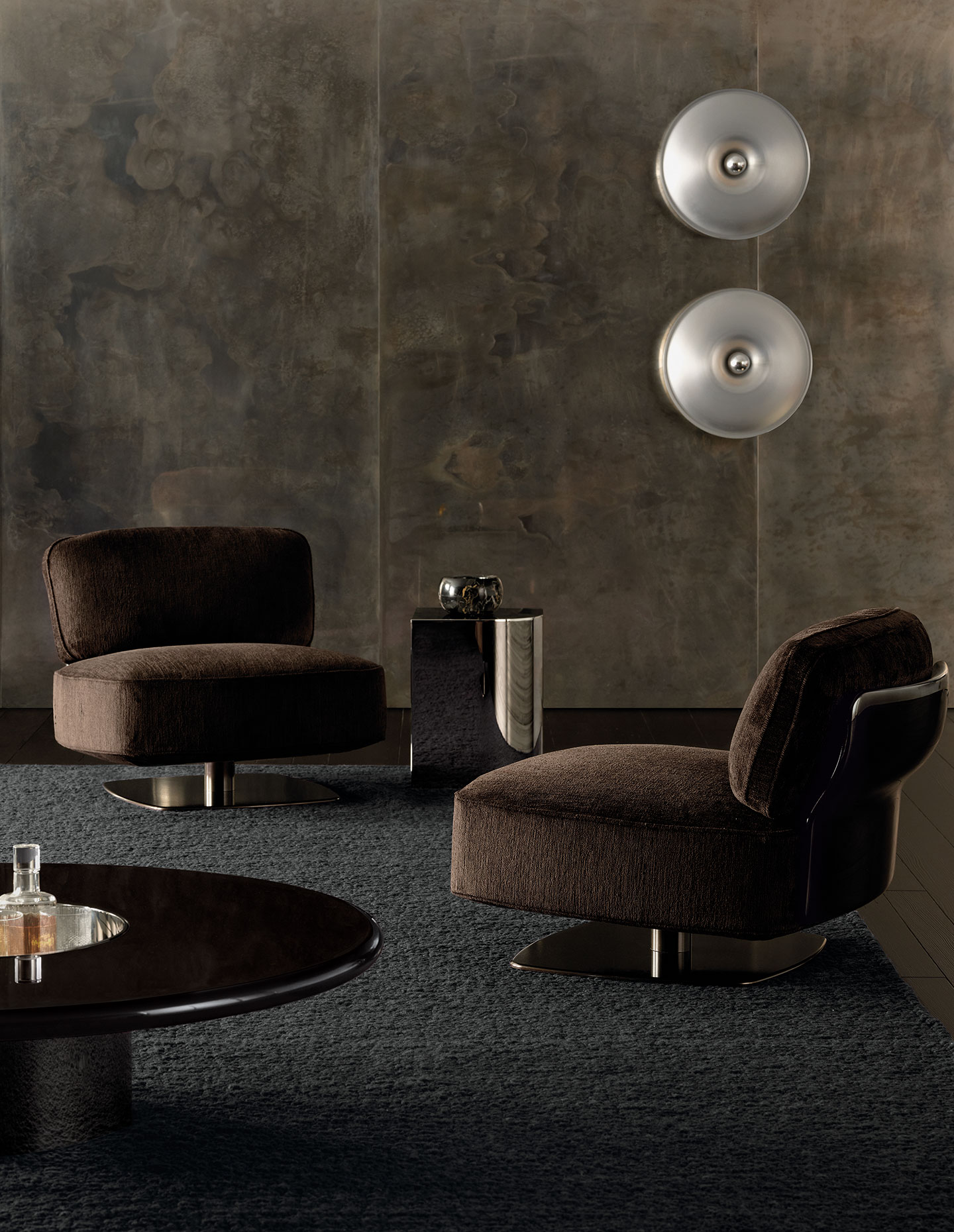
How do you decide when a design is resolved – when enough is enough?
With Minotti, a piece is never treated as a standalone object. It’s designed to be combined with other Minotti furniture to create a cohesive space, so the idea of something being ‘complete’ may not fully apply. I believe that it’s precisely the presence of a certain incompleteness that gives rise to stories – and allows people to form emotional connections.
Minotti is a brand with an inherent voice. What did you discover about your process while working within that?
I’ve been working with the Minotti family for over seven years now, and rather than discovering my own process, I feel that our process has evolved together. One major shift is that, whereas I used to present fully developed designs, in recent years I’ve begun sharing ideas in a more abstract form, allowing us to develop the design together from an earlier stage.
Minotti is available exclusively in Australia through dedece.
